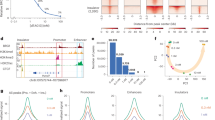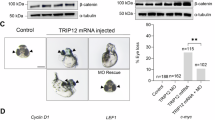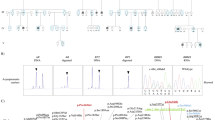Abstract
The SWI/SNF chromatin-remodeling complexes utilize energy from ATP hydrolysis to reposition nucleosomes and regulate the expression of human genes. Here, we studied the roles of human Brahma (hBrm) and Brahma-related gene 1 (Brg1), the ATPase subunits of the SWI/SNF complexes, in regulating human genes. Our results indicate that both hBrm and Brg1 interact with Signal transducer and activator of transcription (Stat) 1 in vitro. However, Stat1 in its native form only recruits hBrm to IFNγ-activated sequences (GAS) of individual genes; by contrast, in a stress-induced phosphorylated form, Stat1 mainly binds to Brg1. Under basal conditions, hBrm is recruited by native Stat1 to the GAS and exists in a mSin3/HDAC co-repressor complex on the hsp90α gene, which shows a compact chromatin structure. Upon heat-shock, hBrm is acetylated by p300 and dissociates from the co-repressor complex, which the phosphorylated Stat1 is increased, and binds and recruits Brg1 to the GAS, leading to elevated induction of the gene. This hBrm/Brg1 switch also occurs at the GAS of all of the three examined immune genes in heat-shocked cells; however, this switch only occurs in specific cell types upon exposure to IFNγ. Regardless of the stimulus, the hBrm/Brg1 switch at the GAS elicits an increase in gene activity. Our data are consistent with the hypothesis that the hBrm/Brg1 switch is an indicator of the responsiveness of a gene to heat-shock or IFNγ stimulation and may represent an “on-off switch” of gene expression in vivo.
Similar content being viewed by others
Log in or create a free account to read this content
Gain free access to this article, as well as selected content from this journal and more on nature.com
or
References
de la Serna IL, Ohkawa Y, Imbalzano AN . Chromatin remodelling in mammalian differentiation: lessons from ATP-dependent remodellers. Nat Rev 2006; 7:461–473.
Flaus A, Owen-Hughes T . Mechanisms for ATP-dependent chromatin remodelling: farewell to the tuna-can octamer? Curr Opin Genet Dev 2004; 14:165–173.
Klochendler-Yeivin A, Muchardt C, Yaniv M . SWI/SNF chromatin remodeling and cancer. Curr Opin Genet Dev 2002; 12:73–79.
Mohrmann L, Verrijzer CP . Composition and functional specificity of SWI2/SNF2 class chromatin remodeling complexes. Biochim Biophys Acta 2005; 1681:59–73.
Chi T . A BAF-centred view of the immune system. Nat Rev Immunol 2004; 4:965–977.
Martens JA, Winston F . Recent advances in understanding chromatin remodeling by Swi/Snf complexes. Curr Opin Genet Dev 2003; 13:136–142.
Flowers S, Nagl NG Jr, Beck GR, Jr, Moran E. Antagonistic roles for BRM and BRG1 SWI/SNF complexes in differentiation. J Biol Chem 2009; 284:10067–10075.
Nagl NG Jr., Wang X, Patsialou A, Van Scoy M, Moran E . Distinct mammalian SWI/SNF chromatin remodeling complexes with opposing roles in cell-cycle control. EMBO J 2007; 26:752–763.
Strobeck MW, Reisman DN, Gunawardena RW, et al. Compensation of BRG-1 function by Brm: insight into the role of the core SWI-SNF subunits in retinoblastoma tumor suppressor signaling. J Biol Chem 2002; 277:4782–4789.
Kadam S, Emerson BM . Transcriptional specificity of human SWI/SNF BRG1 and BRM chromatin remodeling complexes. Mol Cell 2003; 11:377–389.
Muchardt C, Yaniv M . When the SWI/SNF complex remodels...the cell cycle. Oncogene 2001; 20:3067–3075.
Bultman S, Gebuhr T, Yee D, et al. A Brg1 null mutation in the mouse reveals functional differences among mammalian SWI/SNF complexes. Mol Cell 2000; 6:1287–1295.
Bultman SJ, Gebuhr TC, Magnuson T . A Brg1 mutation that uncouples ATPase activity from chromatin remodeling reveals an essential role for SWI/SNF-related complexes in beta-globin expression and erythroid development. Genes Dev 2005; 19:2849–2861.
Wu JI, Lessard J, Crabtree GR . Understanding the words of chromatin regulation. Cell 2009; 136:200–206.
Lessard J, Wu JI, Ranish JA, et al. An essential switch in subunit composition of a chromatin remodeling complex during neural development. Neuron 2007; 55:201–215.
Cheng MB, Zhang Y, Zhong X, et al. Stat1 mediates an auto-regulation of hsp90beta gene in heat shock response. Cell Signal 2010; 22:1206–1213.
Levy DE, Darnell JE Jr . Stats: transcriptional control and biological impact. Nat Rev Mol Cell Biol 2002; 3:651–662.
Platanias LC . Mechanisms of type-I- and type-II-interferon-mediated signalling. Nat Rev Immunol 2005; 5:375–386.
Schindler C, Levy DE, Decker T . JAK-STAT signaling: from interferons to cytokines. J Biol Chem 2007; 282:20059–20063.
Chen XS, Zhang Y, Wang JS, et al. Diverse effects of Stat1 on the regulation of hsp90alpha gene under heat shock. J Cell Biochem 2007; 102:1059–1066.
Giraud S, Hurlstone A, Avril S, Coqueret O . Implication of BRG1 and cdk9 in the STAT3-mediated activation of the p21waf1 gene. Oncogene 2004; 23:7391–7398.
Huang M, Qian F, Hu Y, et al. Chromatin-remodelling factor BRG1 selectively activates a subset of interferon-alpha-inducible genes. Nat Cell Biol 2002; 4:774–781.
Bourachot B, Yaniv M, Muchardt C . Growth inhibition by the mammalian SWI-SNF subunit Brm is regulated by acetylation. EMBO J 2003; 22:6505–6515.
Holling TM, Schooten E, Langerak AW, van den Elsen PJ . Regulation of MHC class II expression in human T-cell malignancies. Blood 2004; 103:1438–1444.
Yoo AS, Crabtree GR . ATP-dependent chromatin remodeling in neural development. Curr Opin Neurobiol 2009; 19:120–126.
Wu JM, Xiao L, Cheng XK, et al. PKC epsilon is a unique regulator for hsp90 beta gene in heat shock response. J Biol Chem 2003; 278:51143–51149.
Mao X, Ren Z, Parker GN, et al. Structural bases of unphosphorylated STAT1 association and receptor binding. Mol Cell 2005; 17:761–771.
Yang J, Stark GR . Roles of unphosphorylated STATs in signaling. Cell Res 2008; 18:443–451.
Sullivan EK, Weirich CS, Guyon JR, Sif S, Kingston RE . Transcriptional activation domains of human heat shock factor 1 recruit human SWI/SNF. Mol Cell Biol 2001; 21:5826–5837.
Qing Y, Stark GR . Alternative activation of STAT1 and STAT3 in response to interferon-gamma. J Biol Chem 2004; 279:41679–41685.
Calo V, Migliavacca M, Bazan V, et al. STAT proteins: from normal control of cellular events to tumorigenesis. J Cell Physiol 2003; 197:157–168.
Laherty CD, Yang WM, Sun JM, et al. Histone deacetylases associated with the mSin3 corepressor mediate mad transcriptional repression. Cell 1997; 89:349–356.
Silverstein RA, Ekwall K . Sin3: a flexible regulator of global gene expression and genome stability. Curr Genet 2005; 47:1–17.
van Oevelen C, Wang J, Asp P, et al. A role for mammalian Sin3 in permanent gene silencing. Mol Cell 2008; 32:359–370.
Hassan AH, Neely KE, Workman JL . Histone acetyltransferase complexes stabilize swi/snf binding to promoter nucleosomes. Cell 2001; 104:817–827.
Gresh L, Bourachot B, Reimann A, et al. The SWI/SNF chromatin-remodeling complex subunit SNF5 is essential for hepatocyte differentiation. EMBO J 2005; 24:3313–3324.
Roberts CW, Galusha SA, McMenamin ME, Fletcher CD, Orkin SH . Haploinsufficiency of Snf5 (integrase interactor 1) predisposes to malignant rhabdoid tumors in mice. Proc Natl Acad Sci USA 2000; 97:13796–13800.
Memedula S, Belmont AS . Sequential recruitment of HAT and SWI/SNF components to condensed chromatin by VP16. Curr Biol 2003; 13:241–246.
Wang W, Xue Y, Zhou S, et al. Diversity and specialization of mammalian SWI/SNF complexes. Genes Dev 1996; 10:2117–2130.
Li ZY, Yang J, Gao X, et al. Sequential recruitment of PCAF and BRG1 contributes to myogenin activation in 12-O-tetradecanoylphorbol-13-acetate-induced early differentiation of rhabdomyosarcoma-derived cells. J Biol Chem 2007; 282:18872–18878.
Xiao L, Lang W . A dominant role for the c-Jun NH2-terminal kinase in oncogenic ras-induced morphologic transformation of human lung carcinoma cells. Cancer Res 2000; 60:400–408.
Kuo MH, Allis CD . In vivo cross-linking and immunoprecipitation for studying dynamic Protein:DNA associations in a chromatin environment. Methods 1999; 19:425–433.
Zhang Y, Wang JS, Chen LL, et al. Repression of hsp90beta gene by p53 in UV irradiation-induced apoptosis of Jurkat cells. J Biol Chem 2004; 279:42545–42551.
Tahiliani M, Mei P, Fang R, et al. The histone H3K4 demethylase SMCX links REST target genes to X-linked mental retardation. Nature 2007; 447:601–605.
Acknowledgements
We thank Drs XY Fu, CM Horvath, AN Imbalzano, HB Zhang, S Cadelwood and K Shuai for kindly providing plasmids, antibodies and chemicals used in this work. We thank Dr Robert A Casero, Jr of the Johns Hopkins University School of Medicine for his critical reading of the manuscript, and Dr Weimin Zhong of the Yale University for his contribution to the work. This work was supported by the National Natural Science Foundation of China (90408007, 30871382 and 30721063), the National Basic Research Program of China (973 Program) (2005CB522405), the National Key Scientific Program (2011CB964902) and Special Funds of State Key Laboratories (2060204).
Author information
Authors and Affiliations
Corresponding authors
Additional information
( Supplementary information is linked to the online version of the paper on the Cell Research website.)
Supplementary information
Supplementary information, Figure S1
Efficacy of the hBrm and Brg1 knockdown with their respective siRNA. (PDF 87 kb)
Supplementary information, Figure S2
The interaction of Stat1 with Brg1 or with hBrm in the nuclear extracts from Jurkat cells was not sensitive to DNase I digestion (1u/100μg) at room temperature for 10min. (PDF 199 kb)
Supplementary information, Figure S3
Construction of K1541R/K1543R and K1534R/K1535R plasmids of hBrm. (PDF 75 kb)
Supplementary information, Figure S4
Efficacy of Stat1 knock down by specific shRNA. (PDF 99 kb)
Supplementary information, Figure S5
Effects of heat shock and IFNγ on the expression of IRF-1 gene and a Stat1 mediated hBrm to Brg1 switch at the GAS region of IRF-1 gene in Jurkat. (PDF 52 kb)
Supplementary information, Figure S6
p300 recruiting to the GAS under heat shock in Jurkat and Raji cells. (PDF 42 kb)
Supplementary information, Table S1
The oligonucleotides used in Brg1 and Brm RNAi constructs (PDF 6 kb)
Supplementary information, Table S2
Primers used for the construction of truncated Stat1 (PDF 9 kb)
Supplementary information, Table S3
Primers used in K/R mutations of hBrm-R, Bm-uR & Bm-dR (PDF 10 kb)
Supplementary information, Table S4
Primers in ChIP assays. (PDF 11 kb)
Supplementary information, Table S5
Primers for mRNA expression of the genes with qRT-PCR (PDF 11 kb)
Supplementary information, Table S6
qPCR Primers used in restriction enzyme accessibility assay (PDF 25 kb)
Supplementary information, Table S7
The primers used for construction of mutated mSin3a. (PDF 9 kb)
Supplementary information, Data S1
Supplementary Materials and Methods (PDF 81 kb)
Rights and permissions
About this article
Cite this article
Zhang, Y., Cheng, Mb., Zhang, Yj. et al. A switch from hBrm to Brg1 at IFNγ-activated sequences mediates the activation of human genes. Cell Res 20, 1345–1360 (2010). https://doi.org/10.1038/cr.2010.155
Received:
Revised:
Accepted:
Published:
Issue date:
DOI: https://doi.org/10.1038/cr.2010.155
Keywords
This article is cited by
-
Interplay between cofactors and transcription factors in hematopoiesis and hematological malignancies
Signal Transduction and Targeted Therapy (2021)



